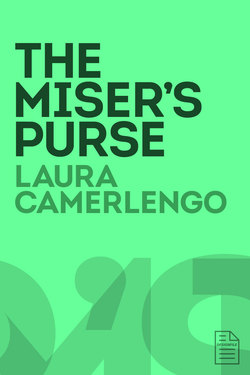Читать книгу The Miser's Purse - Laura Camerlengo - Страница 3
ОглавлениеIntroduction
A young woman stands before an elaborately decorated stall at a fancy fair in For Sale (c. 1855-1860) by the British genre painter James Collinson (fig. 1) . The woman is lavishly dressed, in a sumptuous blue silk dress typical of mid-nineteenth-century fashions and a bonnet tied into a large red bow at the base of her neck. The stall is filled with an assortment of interesting items, from men’s suspenders to photographs. Perhaps the most intriguing object in this scene is the maroon purse with silver beads and rings that she holds in her left hand. This style of purse, known today as a miser’s purse, was ubiquitous in the nineteenth century, especially in the Victorian era (1837-1901). These oblong receptacles had center slit openings and sliding rings or clasp closures. They were used to store coins and other small objects of value during period, and were also deeply embedded in contemporary culture, as seen in Collinson’s painting.
References to miser’s purses are found in paintings, literature, and satire, as well as in fancywork guides, etiquette books, newspapers, and women’s magazines from the nineteenth century. As seen in these many sources, the crafting, giving, receiving, sale, and use of miser’s purses reflected specific social mores and conveyed certain meanings during this period. They were made as gifts for suitors or family members, and also sold in lavish fundraising fairs, where the female attendants were on display as often as the purses. Contemporary writers from James Fenimore Cooper to Caroline Lee Hentz and artists such as James Collinson and Ford Madox Brown adapted the purses’ social uses in the works they produced. Both the making and giving of these purses functioned as important literary and artistic devices: to serve as representations of filial or familial love, to foreshadow marriages between characters, or to help young female characters capture the attention of male suitors. Miser’s purses and their makers were also parodied in satire, especially in negative depictions of women, as seen in the writings of Charles Dickens and William Makepeace Thackeray. By examining these sources alongside extant purses from major museum collections such as the Cooper-Hewitt, National Design Museum, and the Philadelphia Museum of Art, miser’s purses may be contextualized in nineteenth-century popular culture.
